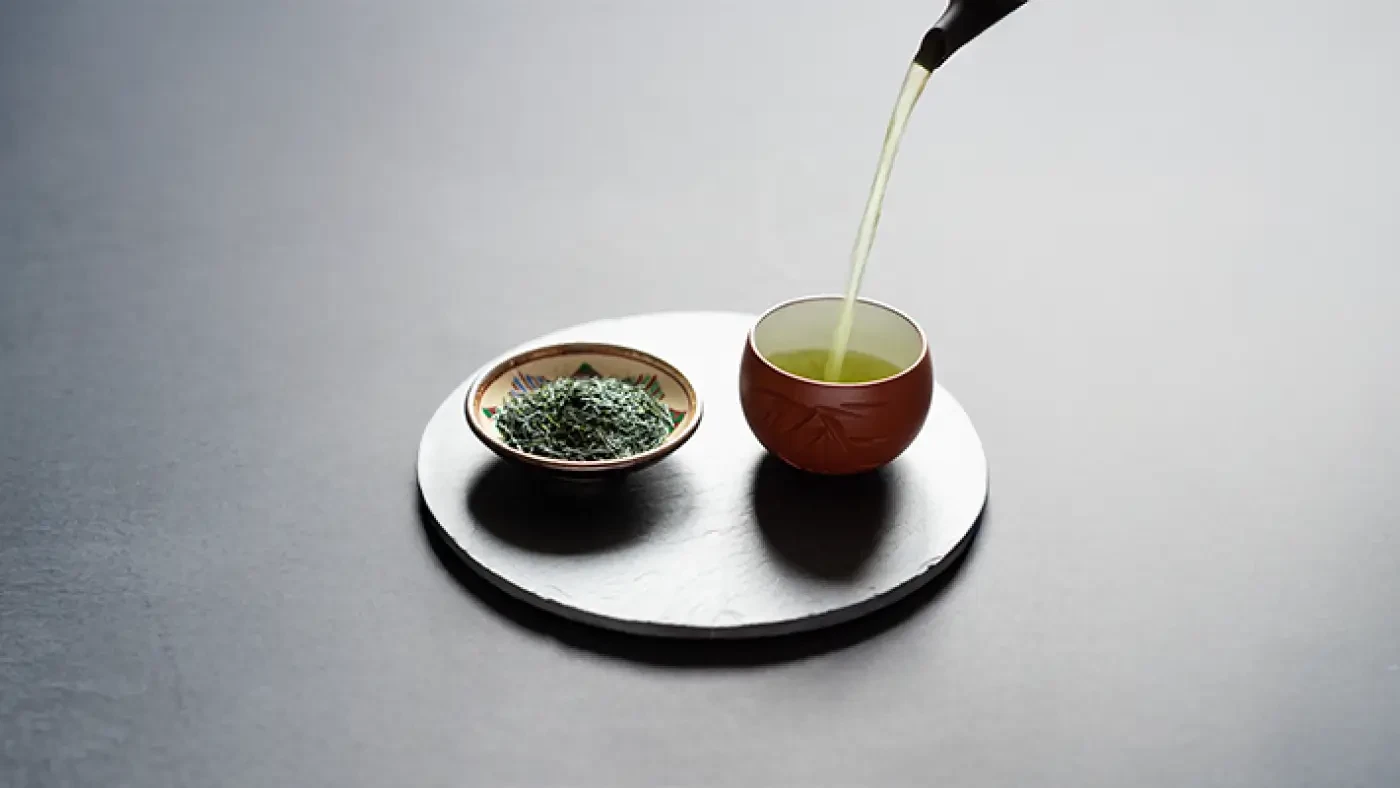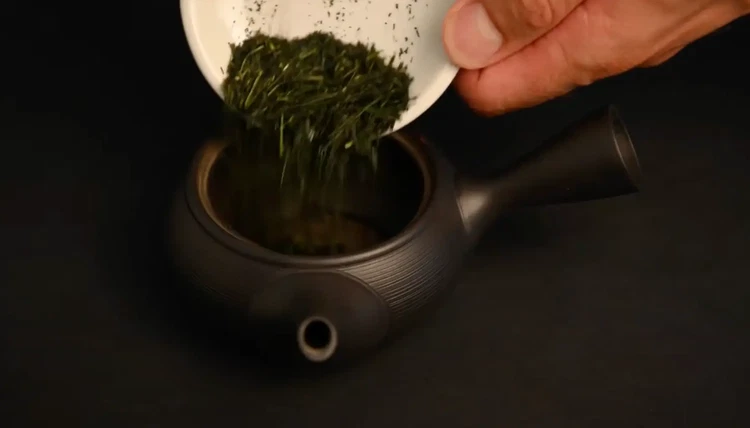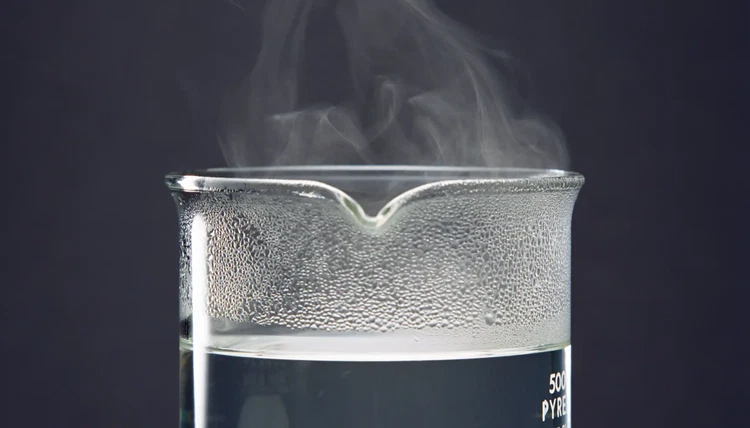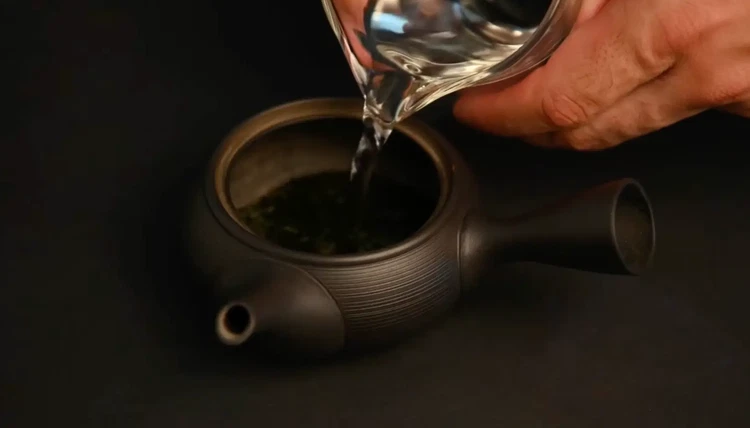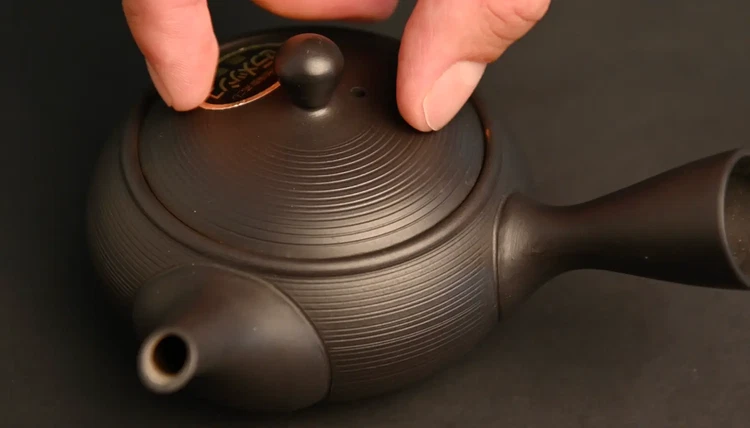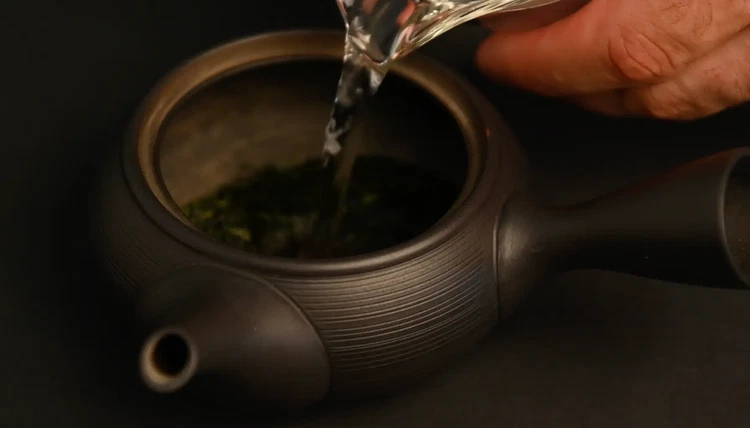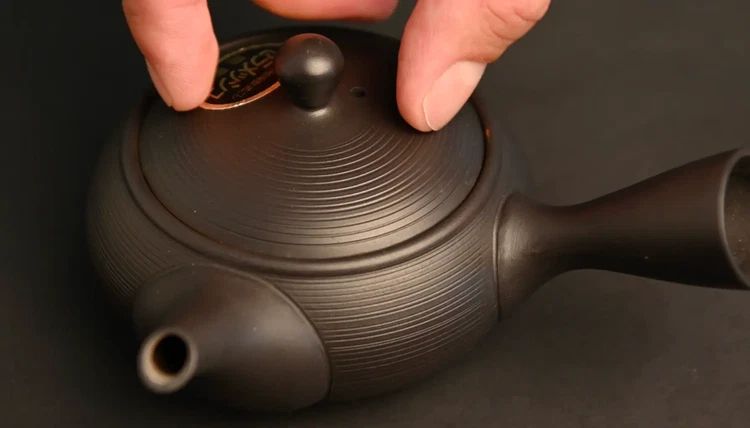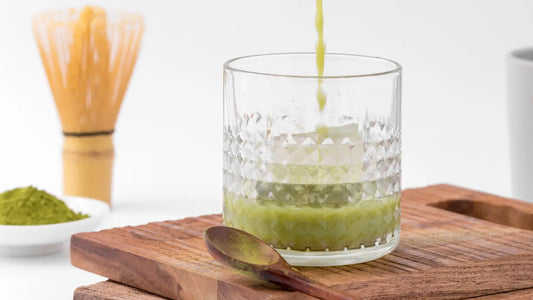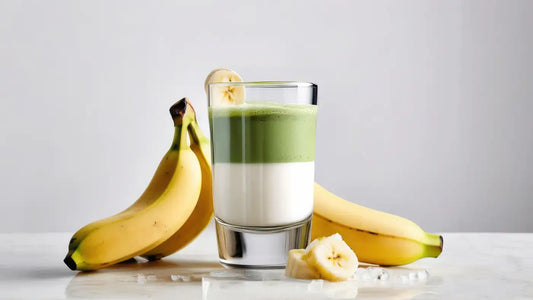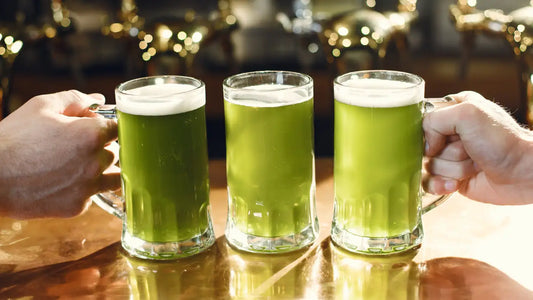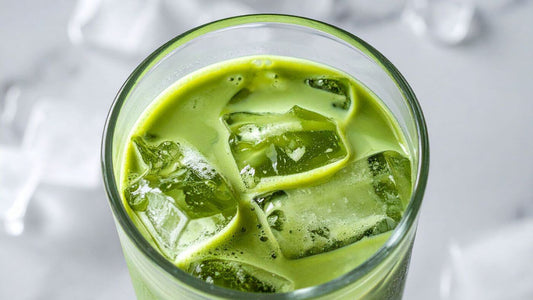How long to brew sencha?
The question of how long to brew sencha depends on what type of sencha you are preparing.
If it is a typical sencha, 1 minute should be the perfect amount of time.
But it depends on the type of Sencha!
If the tea is a fukamushi (deep-steamed) sencha, you may only need to brew the leaves for about 45 seconds.
The reason for this comes down to the size of the leaf particles.
During the longer steaming process, the tea leaves become more brittle, which causes them to break into tiny leaf fragments.
These smaller fragments have a higher relative surface area, so they infuse more quickly into the water.
Best teapot for sencha brewing
 If you’re looking for the best teapot to brew sencha, look no further than the kyusu teapot.
If you’re looking for the best teapot to brew sencha, look no further than the kyusu teapot.
This clay teapot is designed to produce the best-tasting cup of Japanese green tea.
The teapot has a wider base for the leaves to expand and release their flavor into the water.
It also has a side handle to make pouring easier and to prevent your hands from burning. Finally, the teapot has a built-in filter that automatically sifts out the leaves as you pour.
How to make sencha taste better
After reading this guide, you should know how to prepare sencha tea, but there are a few improvements you can make to create a better cup. In this section, we’re going to learn how to select the best sencha and how to brew fukamushi sencha, a special type of sencha that doesn’t follow the conventional brewing.
Choosing the best sencha

It’s not just about how to prepare sencha tea, it’s equally important to select the right sencha.
Shaded sencha will be sweeter than unshaded sencha, and deepsteamed sencha will have a stronger steamed-vegetable flavor compared to short-steamed sencha.
If you want to learn more about the different types of sencha, you can read our guide to the 41 different types of Japanese green teas.
Mastering fukamushi sencha brewing

Fukamushi sencha brewing is slightly different from normal sencha. If you follow our how to make sencha guide but use a fukamushi sencha, the flavor may be a little too bitter.
You’ll want to brew for ~45 seconds instead of 1 minute.
So the question of how long to brew sencha tea depends on how it’s steamed. The longer the steaming, the shorter you need to brew the tea.
How to brew sencha tea with cold water

One of the benefits of sencha tea is how well it works as a cold brew green tea. When we talk about the bitterness of a green tea, we’re talking about the catechins in the leaf. These components are harder to extract and require either a higher temperature or a longer brewing time. That’s why when you brew tea too hot or for too long, you end up with more bitterness.
When you 1 use cold water and brew for a longer period of time, you get plenty of flavor with far less bitterness. To create a cold, refreshing cup of sencha, add 5–10 grams of leaves to a pitcher, pour in 500 ml of roomtemperature or cold water, and let the tea sit for about 3 hours. Once the time is up, pour out the tea and enjoy your refreshing cold brew!
Final thoughts
Because sencha is such a diverse category of teas, there will always be slightly different parameters for each type. In general, you want to keep the leafto-water ratio high, the temperature low, and the brewing time somewhere around 1 minute. This method should work for most types of Japanese green teas!
If you are looking for the best types of sencha teas to prepare, you can browse our assortment of Japanese green teas. We have fantastic deep-steamed senchas like the Kasugaen Asatsuyu and also some incredible teas for cold brew like the Fukamushi Yamaga and the Shizuku Sencha. The Shizuku is made by combining sencha leaves with matcha powder and is considered to be the ultimate tea for cold brew.

